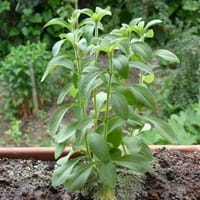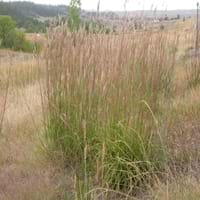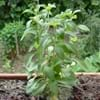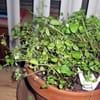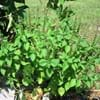Life Span
Perennial
Perennial
Origin
Southwestern United States, Central America, South America, Brazil
North America, United States, Northeastern United States, Mid-Atlantic United States, Southeastern United States, North-Central United States, Central United States, South-Central United States, Southwestern United States, Texas, Canada, Mexico
Types
Not Available
Not Available
Habitat
Mountain Slopes, Mountains, tropical grasslands
meadows, Prairies, Riverbanks, Roadsides, Woods
USDA Hardiness Zone
Not Available
2-7
Sunset Zone
H1, H2, 8, 9, 14, 15, 16, 17, 18, 19, 20, 21, 22, 23, 24
1a, 1b, 2a, 2b, 3a, 3b, 4, 5, 6, 7, 8, 9, 14, 15, 16, 17, 18, 19, 20, 21, 22, 23, 24
Habit
Upright/Erect
Clump-Forming
Flower Color
White
Purple
Flower Color Modifier
Bicolor
Bicolor
Fruit Color
Not Available
Not Available
Leaf Color in Spring
Green, Dark Green
Green
Leaf Color in Summer
Dark Green
Light Green
Leaf Color in Fall
Dark Green
Blue Green, Burgundy, Bronze
Leaf Color in Winter
Light Green
Tan, Sandy Brown
Leaf Shape
Even Pinnate
Grass like
Plant Season
Summer, Fall
Summer, Fall, Winter
Sunlight
Full Sun, Partial Sun
Full Sun, Partial Sun
Type of Soil
Loam, Sand
Loam, Sand
The pH of Soil
Acidic, Neutral
Neutral, Alkaline
Soil Drainage
Average
Well drained
Bloom Time
Summer, Late Summer
Late Summer, Early Fall, Fall
Tolerances
Drought
Not Available
Where to Plant?
Ground
Container, Ground, Pot
How to Plant?
Cuttings, root cutting
Seedlings
Plant Maintenance
Medium
Medium
Watering Requirements
Needs very little water, Over-watering can cause leaf problems or root diseases
Average Water Needs, Do Not over Water, Medium
In Summer
Lots of watering
Lots of watering
In Spring
Moderate
Moderate
In Winter
Average Water
Average Water
Soil pH
Acidic, Neutral
Neutral, Alkaline
Soil Type
Loam, Sand
Loam, Sand
Soil Drainage Capacity
Average
Well drained
Sun Exposure
Full Sun, Partial Sun
Full Sun, Partial Sun
Pruning
Cut away fading foliage, Remove damaged leaves, Remove dead branches, Remove dead leaves, Remove dead or diseased plant parts
Remove damaged leaves, Remove dead branches, Remove dead leaves, Remove dead or diseased plant parts
Fertilizers
Does not require fertilizer once established
All-Purpose Liquid Fertilizer
Pests and Diseases
Bacterial fruit blotch, Damping off, Fusarium wilt, Red blotch, Root rot, Septoria leaf spot, Southern blight
Red blotch
Plant Tolerance
Drought, Variety of soil types
Not Found
Flower Petal Number
Single
Single
Foliage Texture
Medium
Medium
Foliage Sheen
Matte
Matte
Attracts
Bees, Butterflies, Flies
Birds, Butterflies
Allergy
Asthma, Skin irritation, Skin rash
Not Available
Aesthetic Uses
Cottage Garden, Ornamental use
Ground Cover, Landscape Designing, Showy Purposes
Beauty Benefits
Not Available
Not Available
Edible Uses
Yes
Insignificant
Environmental Uses
Air purification
Air purification, Food for animals, Prevent Soil Erosion
Medicinal Uses
Hypoglycaemic
Not Available
Part of Plant Used
Leaves
Leaves, Stem
Other Uses
Not Available
Decoration Purposes, Food for animals
Used As Indoor Plant
Yes
Insignificant
Used As Outdoor Plant
Yes
Yes
Garden Design
Bedding Plant, Container, Edible, Herb / Vegetable, Houseplant, Tropical
Cutflower, Dried Flower/Everlasting, Mixed Border, Screening / Wind Break, Wildflower
Botanical Name
STEVIA rebaudiana
ANDROPOGON gerardii
Common Name
Candyleaf, Stevia, Sweetleaf
Big Bluestem, Turkey Foot
In Hindi
Stevia
Big Bluestem grass
In German
Stevia
Große Bartgras
In French
Stevia
Barbon de Gérard herbe
In Spanish
Stevia
hierba andropogon grande
In Greek
Stevia
Big BLUESTEM γρασίδι
In Portuguese
Stevia
Vetiver grande grama
In Polish
Stewia
Big Bluestem trawa
In Latin
Stevia
Big bluestem herba
Phylum
Tracheophyta
Magnoliophyta
Class
Magnoliopsida
Lillosida
Family
Asteraceae
Poaceae
Clade
Angiosperms, Asterids, Eudicots
Angiosperms, Commelinids, Monocots
Tribe
Eupatorieae
Not Available
Subfamily
Not Available
Not Available
Number of Species
Not Available
Season and Care of Stevia and Big Bluestem
Season and care of Stevia and Big Bluestem is important to know. While considering everything about Stevia and Big Bluestem Care, growing season is an essential factor. Stevia season is Summer and Fall and Big Bluestem season is Summer and Fall. The type of soil for Stevia is Loam, Sand and for Big Bluestem is Loam, Sand while the PH of soil for Stevia is Acidic, Neutral and for Big Bluestem is Neutral, Alkaline.
Stevia and Big Bluestem Physical Information
Stevia and Big Bluestem physical information is very important for comparison. Stevia height is 45.70 cm and width 40.60 cm whereas Big Bluestem height is 38.10 cm and width 152.40 cm. The color specification of Stevia and Big Bluestem are as follows:
Stevia flower color: White
Stevia leaf color: Green and Dark Green
Big Bluestem flower color: Purple
- Big Bluestem leaf color: Green
Care of Stevia and Big Bluestem
Care of Stevia and Big Bluestem include pruning, fertilizers, watering etc. Stevia pruning is done Cut away fading foliage, Remove damaged leaves, Remove dead branches, Remove dead leaves and Remove dead or diseased plant parts and Big Bluestem pruning is done Remove damaged leaves, Remove dead branches, Remove dead leaves and Remove dead or diseased plant parts. In summer Stevia needs Lots of watering and in winter, it needs Average Water. Whereas, in summer Big Bluestem needs Lots of watering and in winter, it needs Average Water.
